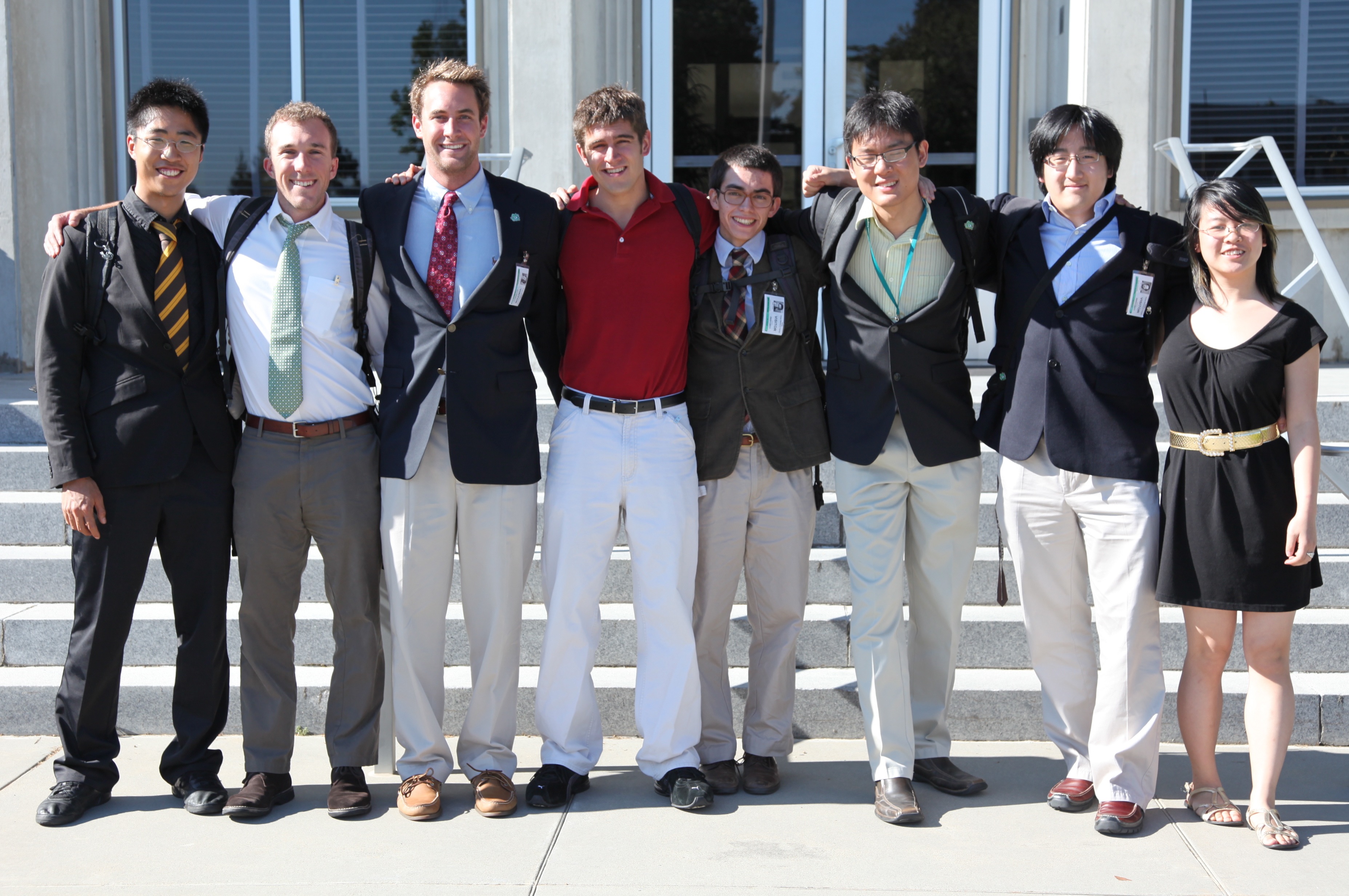Team:Brown-Stanford
From 2011.igem.org
(→August 4th, 2011) |
(→Exploring the Synthetic Biology Applications to Mars Colonization) |
||
| Line 2: | Line 2: | ||
{{:Team:Brown-Stanford/Templates/Twitter}} | {{:Team:Brown-Stanford/Templates/Twitter}} | ||
| - | == ''' | + | == '''Synthetic Biology for Space Exploration''' == |
| - | + | Synthetic Biology has the potential to revolutionize space exploration and settlement. One of the major challenges of space exploration is the limited payload mass that can be launched on a rocket and the difficulty of resupply. Any long term mission will require more resources than astronauts can initially bring with them. Biological tools have a major advantage over classical tools: the ability to self-replicate and regenerate. | |
| + | The emerging field of Synthetic Biology will allow us to engineer microbial factories that will largely circumvent the limiting payload factors. These factories will generate fuel, food, medicines and building materials for settlers, but will consist of engineered cells that could be stored in a single test tube, and regrown to production scale as needed. | ||
| + | |||
| + | The Brown-Stanford iGEM team is excited to work on three different projects, under the common theme of developing Synthetic Biology applications for space: | ||
| + | |||
| + | |||
| + | '''RegoBricks''' uses bacteria to cement Martian and Lunar regolith (soil) simulant into durable building blocks, similar to concrete bricks. Future extraterrestrial settlements will be able to use such a process to build structures using resources readily available in the environment, instead of having to bring those materials from Earth. | ||
*[[Team:Brown-Stanford/REGObricks/Overview|REGObricks Overview]] | *[[Team:Brown-Stanford/REGObricks/Overview|REGObricks Overview]] | ||
| + | |||
| + | '''PowerCell''' develops a universal energy source for other engineered microbes. Engineered photosynthetic bacteria will generate nutrients from sunlight and air and secrete them to feed other organisms. The other organisms could transform these nutrients into fuel, building materials, food, drugs, and more. | ||
*[[Team:Brown-Stanford/PowerCell/Overview|PowerCell Overview]] | *[[Team:Brown-Stanford/PowerCell/Overview|PowerCell Overview]] | ||
| + | |||
| + | '''BioSensor''' develops a novel method of fast-acting biological reporting with changes in cell fluorescence. Bacteria could be used to detect toxic chemicals in the environment, for example, or inform astronauts that their microbial tools are unhealthy. | ||
*[[Team:Brown-Stanford/DNADamage/Overview|Biosensor Overview]] | *[[Team:Brown-Stanford/DNADamage/Overview|Biosensor Overview]] | ||
Revision as of 20:53, 17 August 2011
Synthetic Biology for Space Exploration
Synthetic Biology has the potential to revolutionize space exploration and settlement. One of the major challenges of space exploration is the limited payload mass that can be launched on a rocket and the difficulty of resupply. Any long term mission will require more resources than astronauts can initially bring with them. Biological tools have a major advantage over classical tools: the ability to self-replicate and regenerate.
The emerging field of Synthetic Biology will allow us to engineer microbial factories that will largely circumvent the limiting payload factors. These factories will generate fuel, food, medicines and building materials for settlers, but will consist of engineered cells that could be stored in a single test tube, and regrown to production scale as needed.
The Brown-Stanford iGEM team is excited to work on three different projects, under the common theme of developing Synthetic Biology applications for space:
RegoBricks uses bacteria to cement Martian and Lunar regolith (soil) simulant into durable building blocks, similar to concrete bricks. Future extraterrestrial settlements will be able to use such a process to build structures using resources readily available in the environment, instead of having to bring those materials from Earth.
PowerCell develops a universal energy source for other engineered microbes. Engineered photosynthetic bacteria will generate nutrients from sunlight and air and secrete them to feed other organisms. The other organisms could transform these nutrients into fuel, building materials, food, drugs, and more.
BioSensor develops a novel method of fast-acting biological reporting with changes in cell fluorescence. Bacteria could be used to detect toxic chemicals in the environment, for example, or inform astronauts that their microbial tools are unhealthy.
News
August 4th, 2011
June 7th, 2011
 "
"






